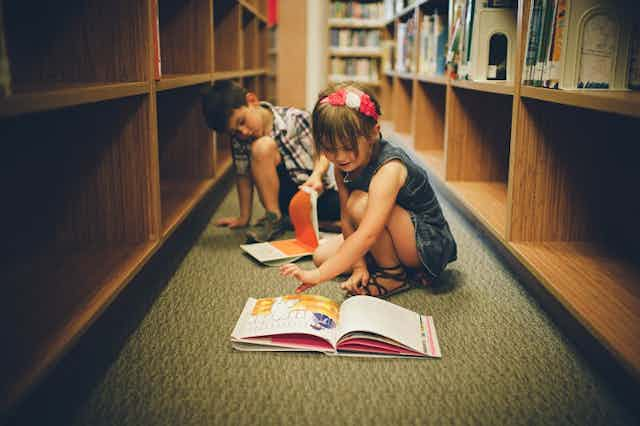As a bookseller, I frequently find myself in conversations with customers about “appropriateness” when choosing literature for young readers – and these often conflict with research I have encountered during my PhD on literature for children.
Concerns about appropriateness can be most often collated within three categories:
1) age group
2) subject matter
3) girls/ boys books.

The last group most interests me, with experiences such as the rejection of Peter Rabbit as a gift suggestion for a young girl because the front-cover was blue, the suitability of Roald Dahl as an author for girls (even before the recent Aldi controversy), and a father’s rejection of his son’s choice of a pink, sparkly notebook as a free gift, exemplifying how adults work to construct gendered boundaries around children’s reading practices.
Naturally, the majority of literature written for children is created by adults. The concept of young children writing and illustrating books for their contemporaries does not exist – nor, obviously, are there companies run by children who are deciding what to publish.
Therefore the children’s literature industry is one comprised of adults, who all hold their own ideas of what children want or need to read. This fact led the American academic Jack Zipes to suggest there is no such thing as “children’s literature”.
It would be remiss not to consider the legitimacy of Zipes’ position, as children’s books are indeed created, published, marketed, reviewed and – particularly in the case of younger children – purchased, and read by adults. The role of the child within their identified literature can seem marginal.
Who a book is aimed at is divided (by adults) along not only age, but also gender lines – a gendering that continues into adulthood (chick-lit anyone?).

It therefore becomes easy to see how the ideas and processes of performing gender are passed from one generation to the next through literature, and how these messages become internalised. My heart ached when I read an anecdote from American literacy researcher Elizabeth Dutro’s exploration of how reading is gendered. It described watching a class of kindergarteners on a library visit, and the taunting a five year old boy received from his friends for selecting The Beauty and the Beast. This was a book the other boys had already learnt to identify as a “girls’ book”, and thus to be avoided.
Reading is one of the most vital ways children learn; therefore an effective and common way young boys can learn to define themselves as separate to girls and women is through reading books about other boys and men, and discarding those books whose narratives are female dominated.
Analysing why there is a need in Western culture to create deep-rooted gender binaries is not a question to consider here. But, whatever the social purpose, such binaries do exist and manifest in the ways children learn to interpret and divide literature along gender lines, into books they “can” read and books they “shouldn’t”.

Children will be drawn to different stories for different reasons, of course. Not all girls will be interested in reading stories conventionally marketed at boys, and vice versa. But there is surely a danger in assuming they won’t be interested.
Keeping particular children from potential enjoyment or illumination because of tightly held assumptions (and without the offering of other stories, assumptions are all they are) about the “natural” interests of a young girl or boy is a mistake.
Books can provide a safe place for reflection. This can be established for readers through a process of recognition of themselves in the characters being read about. By not deconstructing the gendered boundaries we have created around the selection and writing of children’s books we risk a child’s self-worth being called into question when they are unable to find a sense of their own identity reflected in literature.
The negative repercussions this may bring means we will have failed in our role to educate the next generation to think and live more broadly.

